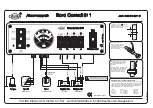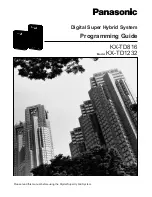
7
Safety Rules
ATTENTION! BECOME ALERT! YOUR SAFETY IS INVOLVED!
•
Safety is a primary concern in the design and manufacture of our products. Unfortunately, our efforts to provide safe equipment
can be erased by an operator’s single careless act. In addition, hazard control and accident prevention are dependent upon the
awareness, concern, judgment, and proper training of personnel involved in the operation, transport, maintenance and storage
of equipment.
•
Make certain that the operator(s), prior to operating is instructed in safe and proper use and reviews and understands the manual(s)
pertaining to this machine.
•
Read this manual before you operate this machine. If you do not understand any part of this manual, or need more information,
contact the manufacturer or your authorized dealer.
1. Understand that your safety and the safety of other persons
are measured by how you service, and operate this machine. Know
the positions and functions of all controls before you try to operate
them. Make sure to check all controls in a safe area before starting
your work.
2. The safety information given in this manual does not replace safety
codes, federal, state or local laws. Make certain your machine has the
proper equipment as designated by local laws and regulations.
3. A frequent cause of personal injury or death is from persons falling
off equipment and being run over. Do not permit persons to ride on
this machine.
4. Travel speeds should be such that complete control and machine
stability is maintained at all times. Where possible, avoid operating
near ditches, embankments and holes. Reduce speed when turning,
crossing slopes and rough, slick or muddy surfaces.
5. Collision of high speed road traffic and slow moving machines can
cause personal injury or death. On roads, use flasher lights according
to local laws. Keep slow-moving-vehicle emblem visible. Pull over to let
faster traffic pass.
6. Make sure that the implement is fastened securely to the tractor
/truck by using the proper hitch pin, clip and safety chains.
7. Before unhooking the implement from the towing unit, be sure
to properly block the wheels to prevent the implement from moving.
8. Never overload the wagon. Overloading the wagon is dangerous
and can cause extensive damage. Never add more sideboards to the
gravity box than what is recomended, as the box is not designed to
carry the additional weight. Do NOT exceed speeds in excess of 20 MPH.
Rim, hubs and bearings are designed for heavy loads at slow speeds.
Also be sure slow moving vehicle emblem is attached to the rear of the
wagon.
9. IMPORTANT: Use caution when transporting. Be alert of the
transport unit’s overall width when approaching obstacles, such as
post signs and poles, along the road. Check the transport width of
the unit to ensure clearance before entering bridges.
10. Do not allow anyone to stand between tongue or hitch and
towing vehicle when backing up.
11. Choose the most level route possible when transporting across
fields.
12. Never adjust, service, clean, or lubricate gravity box until all
power is shut off.
13. Keep all safety shields in place. Keep hands, feet, hair, and clothing
away from the moving parts while the unit is in operation.
14. The service ladder is for service work only. If you must climb into
the grain tank, be certain that all power is shut off and then use
extreme caution when climbing into the grain tank. Never allow
anyone in, near or on the gravity box during transporting or unload-
ing grain. Moving grain is dangerous and can cause entrapment,
resulting in severe injury or death by suffocation.
15. Make sure that everyone is clear of equipment before applying
power or moving the machine.
14.
COMPLY WITH ALL SAFETY WARNINGS AND CAUTIONS IN
THIS MANUAL AND IN THE COMBINE OPERATORS MANUAL
WARNING: BE SURE ALL LIGHTS ARE WORKING PROPERLY
BEFORE HIGHWAY TRAVEL.
SAFETY RULES
Содержание 250-7S
Страница 22: ...22 Parts...
Страница 31: ...31...








































